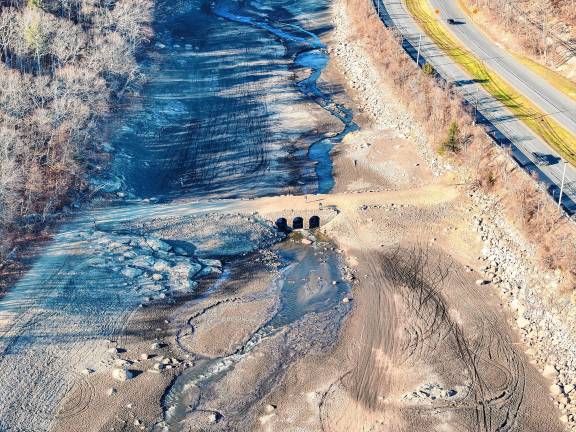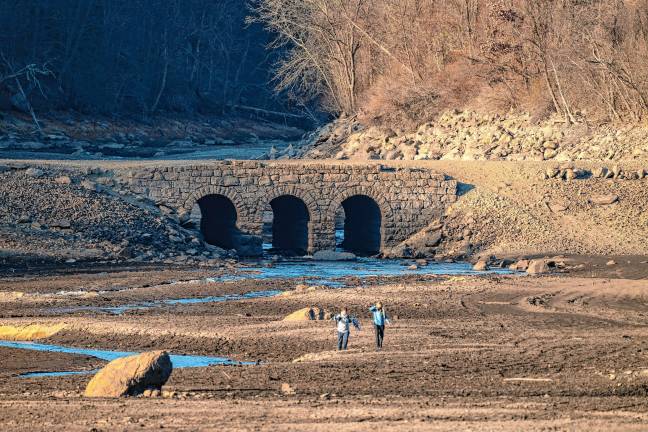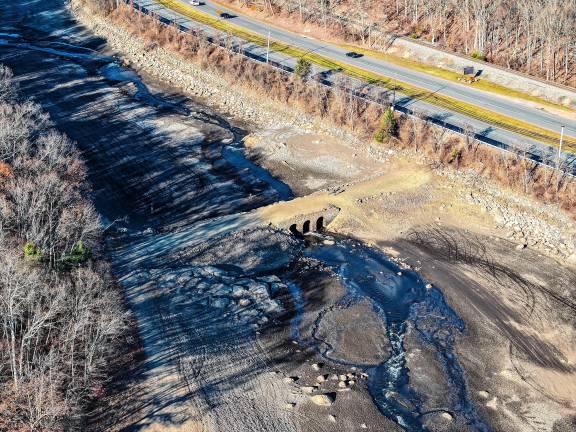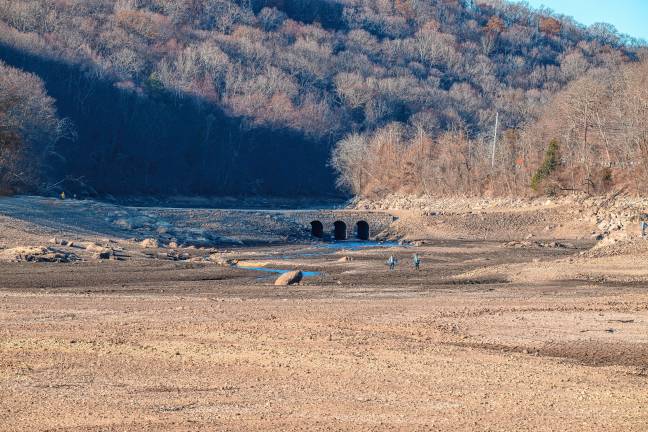



Much of history is subtle and it usually takes some digging in the library to understand the situation.
In most times, monuments to history, those artifacts that embody the significance of the historical moment, are gone to us, leaving only written words for us to understand it or for memory to retain it.
Every once in a while, history comes up and confronts us.
This happened recently with what has been referred to as the ghost bridge, a moniker begotten only in the past few months with the low water level revealing the old stone bridge in Oak Ridge.
The ghost bridge usually is well underwater in the Oak Ridge Reservoir. The reservoir is part of several water storage basins that were constructed about 1900 to provide clean water for the city of Newark.
These include the Newark Watershed, which has prevented many homes from being built around those water bodies and the streams that supply them.
Before the reservoirs were built, this was land in a gently sloping valley within which the Pequannock River flowed down from Sussex County to meet up with the Wanaque River in Riverdale to become the Pompton River. The water flows into the Pompton, then Passaic River.
The ghost bridge was a necessary structure for wheeled travel to traverse the sometimes deep and muddy Pequannock River. The route took the road from the Hardyston area down to the town of Milton.
Today’s Route 23 used to be known as the Paterson Hamburg Turnpike, which was built about 1808. It serviced the route between, you guessed it, Paterson and Hamburg, then went to Deckertown (Sussex Borough) and over the mountains to the Delaware River for boat transfer to Pennsylvania. The turnpike crossed the Pequannock further north, in Snufftown (today’s Stockholm), near the Methodist Church and graveyard.
The Pequannock River today seems innocent and mundane, but it has been a very important source of waterpower in the past. Water was used, of course, for human and animal consumption.
The plentiful iron ore found in this region needed to be heated to a high temperature to melt it down. The Pequannock had much elevation change, allowing for use in the forging of the iron. Forges or bloomeries included Seward’s, Stockholm, Windham, Canistear, Margoram, the Great Charlotteburg Furnace, and Upper and Lower Forge.
There was also a known tannery and the water-powered Skinner knife factory, whose great dam is still visible in the woods near Route 23.
These forges and other industrial uses gained prominence regionally and were in service as far back as 1765, helping supply the Patriots during the Revolutionary War and iron, utensils and leather for the populace during the 1800s.
The emergence of the ghost bridge brings to light the mineral and industrial strength of our part of North Jersey. We continue to be strong with our common natural resources.
Bill Truran, Sussex County’s historian, may be contacted at billt1425@gmail.com
CORRECTION: The Oak Ridge Reservoir was referred to be an incorrect name in an earlier version of this column.